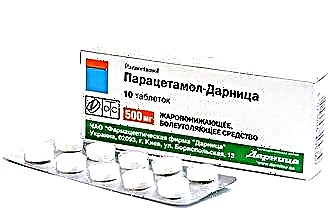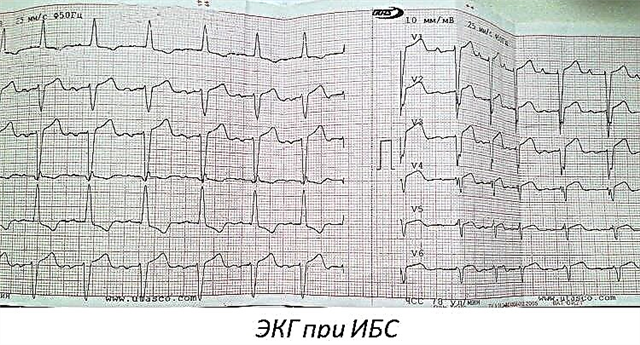Exacerbation of the chronic course of tonsillitis is called angina. According to the localization of the process, it can be one-sided and two-sided. With a one-sided process, one tonsil becomes inflamed, with a two-sided process, both palatine tonsils are affected. Depending on the forms, course and pathogen, different therapy is prescribed. Therefore, at the first manifestations of the disease, it is very important to contact a specialist who will conduct differential diagnostics and explain how and how to treat inflamed glands.
 Unfavorable factors contributing to the development of tonsillitis:
Unfavorable factors contributing to the development of tonsillitis:
- hypothermia of the body;
- tonsils can become inflamed from trauma and burns to the throat;
- infectious processes in the ENT organs;
- chronic pathologies that reduce immunity;
- deficiency of vitamins and minerals;
- prolonged contact with allergens;
- diseases in which lymph flow is disturbed in the body;
- tonsils can become inflamed if you have bad habits: smoking, drinking alcohol.
The causative agent of tonsillitis is a wide range of microorganisms: bacteria, viruses, fungi, bacilli (diphtheria, intestinal, fusiform), spirochetes, helminths, mycoplasmas. Bacterial sore throat is most often caused by beta-hemolytic streptococcus. Bacterial etiology of the disease is much less common than viral (up to 30% of children, up to 15% of adults).
Angina is extremely contagious. The patient is contagious from the beginning of the incubation period until the expressed symptoms subside
Diagnostics
Visual examination of the oropharyngeal cavity is very informative for angina. But in the diagnosis, the main thing is to identify the causative agent of the disease, since the treatment will depend on this. The type of pathogenic agent is determined by culture of a throat swab. The laboratory method takes 1-3 days, but in case of acute tonsillitis, it is necessary to start treatment as early as possible. Currently, there are express tests, with the help of which the doctor identifies the type of microorganisms within 10 minutes right at the reception. From additional examinations, a general analysis of urine and blood is taken. For differential diagnosis, sputum analysis, magnetic resonance imaging may be needed.
Traditional treatments
In addition to adequate therapy, bed, drinking and dietary regimes are of great importance for a favorable outcome. Sore throat on the legs should not be tolerated, as formidable complications can develop. Bed rest must be observed from the onset of the disease to the subsidence of severe symptoms. With a viral etiology, the symptoms subside in 1-3 days if the correct treatment is prescribed. With bacterial  etiology, a pronounced clinical picture can be observed for 5-14 days.
etiology, a pronounced clinical picture can be observed for 5-14 days.
The duration of the acute period depends on the state of immunity and the correctness of therapy.
During the period of illness, solid, hot, cold, aggressive food is not consumed. Dishes should be freshly prepared and warm. You do not need to eat hard-to-digest food: meat, bacon, sausages, fatty fish, cakes, sweets. The body spends a lot of energy on the digestion of such foods, which is already lacking, especially in the acute phase. It is not recommended to drink freshly squeezed juices, especially citrus fruits, they are aggressive for the pharyngeal mucosa. They can be diluted in half with water. You need to drink warm tea with honey and lemon, weak broths, low-fat fermented milk and dairy products, non-acidic fruit drinks, jelly, liquid yoghurts.
If the tonsils are inflamed due to a bacterial infection, then antibiotic therapy is the basis of treatment. Prescribed drugs of a wide spectrum of action, depending on the sensitivity of the patient's body to one or another group of antibiotics.
With a viral infection, the use of antibiotics is impractical. Also, antibiotics should not be used as a prophylaxis.
Symptomatic therapy
To relieve symptoms, the following drugs are prescribed:
- pain relievers: combined non-steroidal anti-inflammatory drugs are used: nise, indomethacin, naproxen, Cerebrex. These drugs have a high analgesic effect, but they all have serious side effects (in 25% of cases), therefore, their independent intake is completely excluded;
- antihistamines: cetrin, diazolin, suprastin, tavegil. Cetrin is a new generation drug that is easily tolerated and does not cause drowsiness, in contrast to the first generation antihistamine group drugs;
- antipyretics: the safest medicine in this
 paracetamol is considered a category because it has no additional anti-inflammatory effect. People with liver disease are the only category of patients for whom paracetamol is contraindicated.
paracetamol is considered a category because it has no additional anti-inflammatory effect. People with liver disease are the only category of patients for whom paracetamol is contraindicated.
Long-term use of acetylsalicylic acid can cause bleeding.
Nimesulide is an effective antipyretic and analgesic drug, but it should be taken with caution by people with digestive tract diseases.
Combined drugs analgin and ibuprofen practically do not cause side effects with short-term use. The only thing, analgin has a toxic-allergic effect and in very rare cases can cause anaphylactic shock. Analgin is also available in injection solutions, it is convenient if the patient is in serious condition and cannot drink pills on his own;
Antipyretics should be taken only as a last resort at febrile temperature, strictly observing the dosage
- antitussive drugs. There is a huge list of antitussives, all of them are divided into specific groups and are prescribed depending on the type of cough and the patient's condition. Currently, preference is given to effective drugs without narcotic components: libexin, glaucine, tusuprex, paxeladin. These funds are not prescribed to women during pregnancy and lactation, patients with respiratory failure, children under 2 years of age;
- complexes of vitamins and microelements to strengthen the immune system. The combined preparation alphabet contains the largest amount of vitamins (13 out of 13 essential) and minerals (10 out of 20 essential). An effective complex for tonsillitis is the drug gerimax (10 vitamins, 7 minerals).
Local therapy
No treatment for inflammation of the glands is complete without local therapy. Antiseptics in throat sprays are prescribed. They disinfect, soften, anesthetize the mucous membrane, facilitate swallowing and breathing. For bacterial tonsillitis, sprays with an antibiotic are used (hexoral, stopangin, inhalipt, bioparox), for viral tonsillitis - agents with an anti-inflammatory active substance (propasol, trantum verde). If the drug does not help after two use, then it should be replaced.
Frequent rinsing of the throat is imperative. With the help of this procedure, plaque is washed off, microbes are destroyed and evacuated, purulent plugs are removed, the mucous membrane of the oropharynx softens, inflammation, pain, hyperemia, swelling decreases, and the healing process is accelerated.
The most common and effective remedy for this purpose is saline. It can be bought ready-made or prepared at home: for 200 ml of warm boiled water, 2-3 grams of table salt. You can add baking soda on the tip of a spoon and a couple of drops of iodine to the solution. Do not eat or drink liquids 20 minutes before the procedure and for 20 minutes after the procedure. Rinse for 7-10 days. In addition to saline, a solution of furacilin, miramistin, chlophilipt (oil or alcohol solution) is used.
Inhalation is most conveniently carried out with a nebulizer. For inhalation, the following means are used:
- furacilin is a powerful antiseptic;
- miramistin is a broad-spectrum antiseptic, a universal remedy used for all infections of the oropharynx;
- cromohexal - used for severe throat swelling and a tendency to spasms;
- tonsilgon N is a homeopathic remedy with natural herbal ingredients with absorbable, antiseptic, anti-inflammatory effect;
- fluimucil antibiotic - used at the initial stage of a purulent process in the tonsils, in many cases it can replace the use of systemic antibiotics;
- chlorophyllipt is a bactericidal alcohol or oil solution that effectively eliminates soreness, swelling of the tonsils and pharyngeal mucosa.
Mustard wraps, warming compresses on the throat give a good healing effect. Water, alcohol, saline, mustard plasters are used as a warming component. The main thing is not to overexpose the compress and not to burn it.
Warming procedures cannot be carried out at elevated body temperature and in the purulent stage of the process.
Traditional methods of treatment
- rinsing the throat with beet or lemon juice diluted with water 1:10;
- for rinsing, tinctures of propolis, Kalanchoe, aloe, eucalyptus are used. Tinctures are not used in the acute phase, when there is intense pain in the tonsils and severe redness;
- compresses on the throat from a decoction of sage with vinegar;
- mustard or ginger powder is poured into thin socks, woolen socks are put on top, the procedure is carried out at night until recovery;
- for inhalation, use essential oils of eucalyptus, lemon oil, ginger, cinnamon;
- drink milk or tea with honey, cardamom or cloves, herbal decoctions with anti-inflammatory, diaphoretic effect. The main condition is that the drink should be warm and pleasant.
Other methods of treating inflamed tonsils include homeopathic remedies, ultrasound therapy, magnetotherapy, and laser therapy.
Angina is not as terrible as its consequences. Delayed or illiterate therapy leads to the development of formidable complications: inflammatory processes in the heart and blood vessels, glomerulonephritis, rheumatism, laryngeal edema, paratonsillar abscess, meningitis, blood poisoning, brain abscess. Many of these diseases  can be fatal in the absence of specialized care, and other conditions will require long-term treatment.
can be fatal in the absence of specialized care, and other conditions will require long-term treatment.
Preventive measures will significantly reduce the risk of developing acute tonsillitis or make it possible to transfer it in a mild form. There is no specific prophylaxis of angina, there are only general recommendations: strengthening the immune system, playing sports, giving up bad habits, good nutrition, the use of vitamins.
Angina is transmitted by airborne droplets (through the air), by contact (through household items), alimentary (through dirty hands, contaminated water). Therefore, contact with an infected person and crowded places should be avoided during an epidemic of colds.

 paracetamol is considered a category because it has no additional anti-inflammatory effect. People with liver disease are the only category of patients for whom paracetamol is contraindicated.
paracetamol is considered a category because it has no additional anti-inflammatory effect. People with liver disease are the only category of patients for whom paracetamol is contraindicated.

